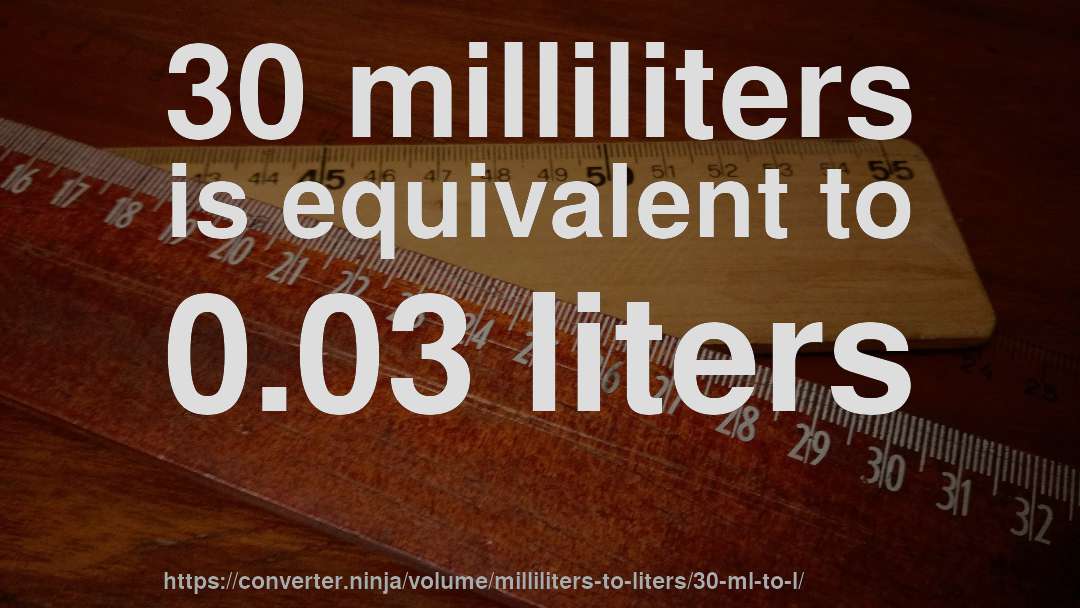
30 milliliters is equivalent to 0.03 liters.
We know (by definition) that: 1 ml ≈ 0.001 liter
We can set up a proportion to solve for the number of liters.
1 ml 30 ml ≈ 0.001 liter x literNow, we cross multiply to solve for our unknown x:
x liter ≈ 30 ml 1 ml * 0.001 liter → x liter ≈ 0.03 literConclusion: 30 ml ≈ 0.03 liter
The inverse of the conversion factor is that 1 liter is equal to 33.3333333333333 times 30 milliliters.
It can also be expressed as: 30 milliliters is equal to 1 33.3333333333333 liters.
Approximation
An approximate numerical result would be: thirty milliliters is about zero liters, or alternatively, a liter is about thirty-three point three two times thirty milliliters.
Units involved
This is how the units in this conversion are defined:
Milliliters
"Derived unit, defined as one-thousandth of a litre."
Liters
"The litre (British spelling) or liter (American spelling) is an SI accepted metric system unit of volume equal to 1 cubic decimetre (dm3), 1,000 cubic centimetres (cm3) or 1/1,000 cubic metre. A cubic decimetre (or litre) occupies a volume of 10×10×10 centimetres (see figure) and is thus equal to one-thousandth of a cubic metre."
[1] The precision is 15 significant digits (fourteen digits to the right of the decimal point).
Results may contain small errors due to the use of floating point arithmetic.ncG1vNJzZmibn6PDpr7Tnqlnppmjt6J71aijrqWVZLqquMuio6KslafAbsDOZqOirJWnwHB%2Fj2akpWWkpHqtew%3D%3D